RFID Breaks Last Mile Delivery: Efficiency Revolution and Hybrid Environment Challenges from DHL/Amazon Practice
The 'last mile delivery' is the 'last mile' of the logistics chain, but it is often the most inefficient and costly link - the courier repeatedly checks the address while holding a pile of packages, the wrong delivery is caused by slow label recognition during warehouse sorting, and consumers complain about package delay or loss... The core of these problems is actually the lag in 'package information acquisition efficiency'. The emergence of handheld ultra-high frequency RFID readers is rewriting this situation. Especially the practices of logistics giants such as DHL and Amazon have shown us how RFID can bridge the "information gap" of the last mile. However, the challenges in a hybrid (RFID+barcode) warehouse environment have also become issues that enterprises have to face when landing.

1、 The efficiency bottleneck of the last mile: why is it difficult to break through the traditional mode?
Before the popularization of RFID, the pain point of last mile delivery almost ran through the entire process of "warehouse sorting, transportation scheduling, and end of pipe delivery". The most typical example is the warehouse sorting process: in the past, barcode scanning was relied upon, and the sorter needed to hold a barcode scanner and aim each package at the label one by one. When encountering label wrinkles and stains, the sorter had to repeatedly adjust the angle. A sorter can process up to 800 packages per hour, but the error rate is as high as 0.3% - this means that a warehouse that processes 100000 packages per day will have 300 returned due to incorrect delivery, which not only wastes logistics costs but also delays user receipt.
2、 Giant practice: How can handheld ultra-high frequency RFID reconstruct sorting efficiency?
In the last mile sorting process, DHL and Amazon's handheld ultra-high frequency RFID applications have delivered stunning results - they have replaced "piece by piece scanning" with "batch recognition", pushing sorting efficiency and accuracy to new heights.
DHL's "city distribution centers" in Europe are a typical case. In 2023, the center will fully install ultra-high frequency RFID tags for end delivery packages, and the sorters will be equipped with handheld ultra-high frequency readers (such as Zebra RFD90). In the past, the sorter had to scan the codes one by one to process a basket of 10 packages, which took about 2 minutes; Now all you need to do is scan the top of the basket with a reader, and within 2 seconds, it can recognize the destination and priority information of all packages. The system will automatically assign the packages to the shelves corresponding to the delivery route. Data shows that the sorting efficiency of the center has increased threefold, with the error rate dropping from 0.3% to 0.02%, and a daily reduction of 280 returned packages, saving over 120000 euros in logistics costs in a single month.
More importantly, RFID's' dynamic adjustment capability '. For example, for a package sent to an office building, if the customer temporarily changes the delivery time, the system will mark it as "delayed delivery" in real time during sorting. When the sorter scans it with a handheld reader, the device will pop up a red reminder to avoid the package being mistakenly loaded onto the instant delivery vehicle. This' real-time information exchange 'makes the sorting process no longer a' mechanical operation ', but a' dynamic node 'that can flexibly respond to end demand.
Amazon's practice is closer to the integration of end of pipe scenarios. At Amazon's regional delivery stations in the United States, couriers will use handheld ultra-high frequency readers to scan all packages in the car before departure. The system will automatically generate the optimal delivery route based on real-time road conditions and package priorities, such as placing fresh packages at the front to avoid expired and spoiled packages; When a residential area is closed, the reader will immediately prompt "Go to a nearby courier cabinet" and synchronously send the pickup code to the user. Data shows that after adopting this model, Amazon's end-to-end delivery efficiency has increased by 25%, and the user complaint rate has decreased by 40%, with almost no complaints of "package not found".
The core logic of these practices is clear: handheld ultra-high frequency RFID breaks down the information barrier of "sorting delivery", allowing every step of the package from the warehouse to the user's hands to be tracked and dynamically adjusted in real time, rather than relying on manual connection and experience judgment as in the past.
3、 The dilemma of hybrid warehouses: 4 major challenges of RFID+barcode coexistence
Although RFID has obvious advantages, most enterprises cannot achieve "full RFID" in one step - a large number of old packages still use barcodes, and new packages use RFID tags, forming a "mixed warehouse environment". This transitional stage scenario has instead given rise to new operational challenges.
The first challenge is the cost of device switching. Sorters need to carry both handheld RFID readers and barcode scanners, and frequently switch devices when encountering packages with different labels. The person in charge of a certain e-commerce warehouse once revealed that in the early stage of the hybrid mode, the sorter forgot to switch devices, resulting in more than 100 barcode packages being mistakenly scanned as "unrecognized", which delayed the delivery on the same day. What's even more troublesome is device compatibility - some warehouse management systems (WMS) are unable to handle both "batch data" from RFID and "single data" from barcodes simultaneously. For example, if RFID uploads information for 10 packages at once, the system may only recognize 5 of them due to mismatched data formats, resulting in missing information.
The second challenge is "label conflict and recognition interference". The recognition distance of ultra-high frequency RFID can reach 10 meters. In a mixed warehouse, if barcode packages and RFID packages are stacked together, handheld RFID readers may misread nearby RFID tags, resulting in confusion. For example, a certain express warehouse placed RFID labeled document bags and barcode labeled cardboard boxes on the same shelf. When the sorter scanned the cardboard boxes, the reader misread the information on the adjacent document bags and mistakenly assigned the boxes to the document delivery route. The problem was not discovered until the user refused to accept them.
The third challenge is the 'cost balancing problem'. For small and medium-sized enterprises, the cost of fully replacing RFID tags is too high - a single ultra-high frequency RFID tag costs about $0.5, which is 10 times more expensive than barcode tags. If the warehouse processes 50000 packages per day, the cost of a single tag will increase by $20000. Therefore, many companies choose to use RFID for high-value packages and barcode for ordinary packages, but this also leads to fragmented sorting processes: sorters need to distinguish the type of package label before selecting the corresponding equipment, which actually reduces efficiency.
The fourth challenge is the 'employee operation threshold'. Old employees are accustomed to the "precise operation" of barcode scanning and are not accustomed to the "batch recognition" of RFID - for example, some sorters are worried about "scanning once but not all" and will repeatedly use the reader to scan the same batch of packages, which wastes time; Some people are still unclear about the information differences between the two types of tags, such as confusing the "real-time inventory data" of RFID with the "static outbound data" of barcode, which leads to errors in inventory statistics in the system.
4、 Breaking the deadlock: Three practical strategies in a mixed environment
The challenge of hybrid warehouses is not insurmountable, the key is to find the synergy between RFID and barcode, rather than simply choosing between the two. The following three strategies have been validated and effective in some enterprises.
Firstly, it is' adapting devices to different scenarios'. For high turnover packages (such as fresh produce and urgent items), RFID tags are fully adopted, equipped with dedicated handheld ultra-high frequency readers, and placed in independent sorting areas; Low turnover regular packages retain barcodes and are processed with a barcode scanner. After adopting this model in a certain fresh food e-commerce warehouse, the sorting staff no longer need to frequently change equipment, the efficiency of the high turnover area is increased by three times, the wrong delivery rate in the ordinary area remains stable at less than 0.1%, and the cost only increases by 15% (far lower than the 50% cost increase of full RFID).
Next is the integration of system data center. Build a unified data center to convert RFID batch data and barcode single data into a unified format, and then synchronize them to the WMS system. For example, the middle desk of a logistics enterprise will automatically mark "RFID data with real-time location information, barcode data with static outbound information". When the sorter scans with a handheld device, the system will automatically identify the tag type without the need for manual switching. After the implementation of this plan, the system data matching rate increased from 70% to 99.8%, and the problem of missing information was basically solved.
Finally, there is the 'tiered employee training'. For senior employees, first train them on "RFID basic operations+tag identification skills", such as using colors to mark packages (red RFID, blue barcode) to reduce recognition difficulty; For new employees, direct training will be provided on the full process operation of the mixed mode, and simulated scenarios will be used for assessment (such as intentionally mixing packages with two types of labels to test sorting accuracy). A certain express delivery company has shortened the employee adaptation period from 2 weeks to 3 days and reduced the operational error rate by 60% through this training.
From the practices of DHL and Amazon, RFID is not meant to "overturn" traditional technology, but to move the last mile from "extensive delivery" to "precise service" through "efficient information flow". In the future, with the cost reduction of handheld RFID devices (expected to decrease by 30% in the price of ultra-high frequency readers by 2025) and the maturity of hybrid environment solutions, more small and medium-sized enterprises will be able to enjoy the efficiency dividends brought by RFID - such as community stations using readers to quickly inventory packages waiting to be picked up, convenience stores using RFID to track takeout orders, and even individual users being able to view delivery status through simple readers.
The core competitiveness of the last mile is no longer "fast delivery", but "accurate delivery and excellent service". The value of RFID lies in breaking down information barriers with technology, allowing each package to be "accurately tracked and flexibly adjusted", ultimately achieving seamless integration between "warehouse user". Faced with the challenges of a mixed environment, companies do not need to rush to find a transition plan that suits their own business, in order to find the best balance between efficiency and cost.
No comments

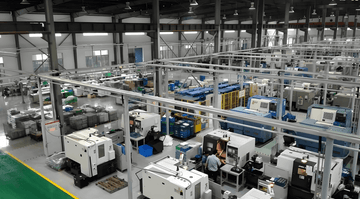
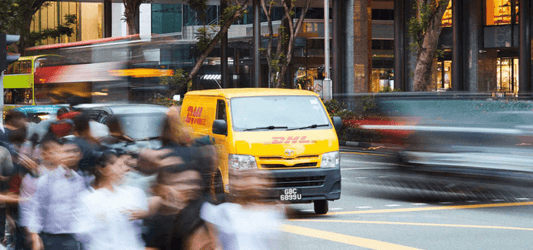
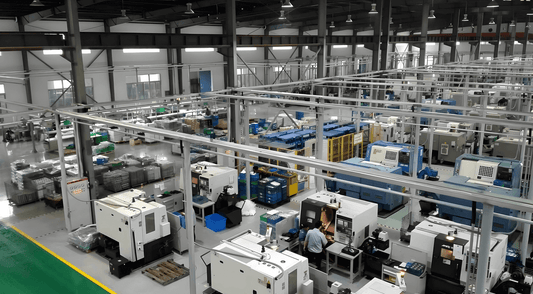
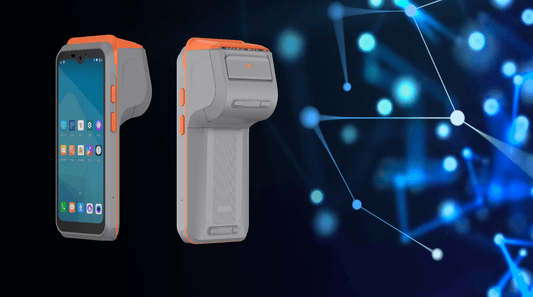
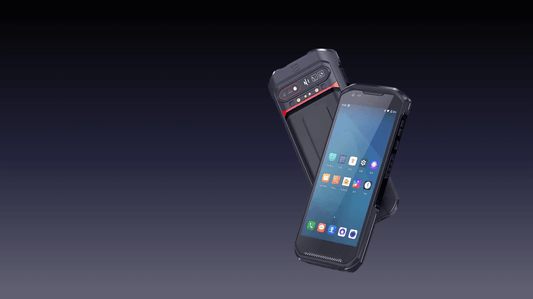
0 comments